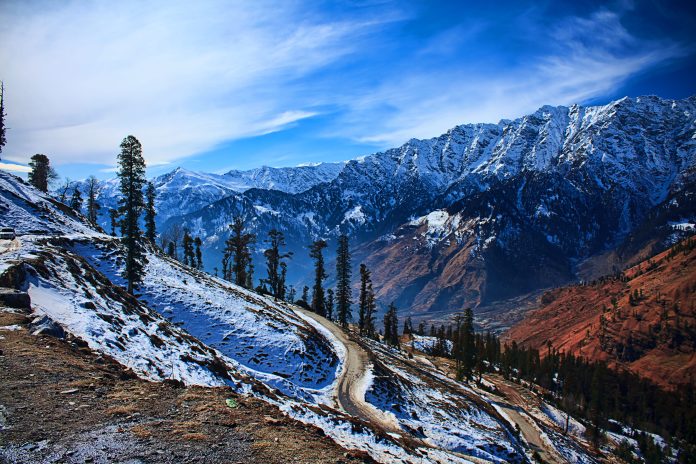An art village, apple farming and western horned tragopan among many other rare assets, along with deep forests and streams of Himachal Pradesh dominated the virtual event held to market tourism prospects of the state recently.
Highlighting “Himachal — Around the next bend”, the webinar organised by the Tourism Ministry focussed on the beautiful villages, mountains, pristine rivers, culture and heritage of the state as part of the Dekho Apna Desh session aimed at increasing tourist footfalls.
According to the ministry, the series is an effort to showcase India’s rich diversity under the Ek Bharat Shreshtha Bharat programme.
The session was moderated by Additional Director General Rupinder Brar while the presentation was done by Frank Schlichtmann, founder, The 4tables Project, Ankit Sood, Managing Host, Sunshine Himalayan Adventures and Michael and Devanshe Lidgley, owners, Himalayan Orchard.
The three presenters highlighted the unexplored destinations and unique cultural and heritage wealth of Himachal Pradesh.
Frank Schlichtmann started the session by highlighting an interesting art village called Gunehar — a beautiful amalgamation of nature, streams and forests.
Gunehar is located in Kangra district of the state.
The idea behind this art project in Gunehar was to make travellers conscious of the leisurely need to focus on the village without affecting the place by crowding.
Gunehar is well connected by road, rail and air.
The valley has many small villages and Gunehar is the largest panchayat with just 3,000 people.
The settlement started a little over 100 years ago.
Originally, people of the village were shepherds, but now, many of them are farmers, while some have shops and others work.
The villagers are grounded, have a sense of dignity and are knowledgeable.
The 4tables project started in 2008 with good participation, followed by the art festival in 2013.
Art shops were developed, inviting artists to come and work in empty spaces and present their work, which is showcased to people from all walks of life.
The whole event is a joint venture with the artist, visitors and villagers as stakeholders.
The villagers call it ‘Mela’.
It has become a huge success and the final week is organised as an art festival with theatre, music, film screening among others.
Local cultural elements are well represented towards the closing ceremony.
Ankit Sood took us virtually through the World Heritage Site called the Great Himalayan National Park located in Kullu region.
Great Himalayan National Park is spread across four valleys — Sainj Valley, Jiwa Nal Valley, Tirthan Valley and Parvati Valley.
The park protects over 1,000 plant species, including many medicinal herbs, 31 mammal species and 209 bird species, as well as amphibians, reptiles and insects.
Four of GHNP’s mammal species and three of its bird species are globally threatened, including the musk deer and the western horned tragopan.
The third little-known destination in Himachal Pradesh showcased by Michael and Devanshe Lidgley was that of Kotkhai, a town in Shimla district.
Kotkhai Palace is 800 years old and the royal family still resides there.
The event also highlighted Rukhla village — an apple-growing village.
A three-hour hike from Rukhla takes you to the highest point where you can have a mesmerising 360-degree view of the Greater Himalayas.
The village is well known for its majestic flora and fauna including Black Bear, Barking Deer, Musk Deer, Langur, Leopards and Monal.
There are famous shrines such as Kiari temple and Narayan temple.
The Kiari temple, which is based on Kotkhai architecture wood and stone is earthquake-resistant, while the Narayan temple is rebuilt based on its original style.
The event also featured the Naga cult, with its subterranean water sources linked to fertility.
The sessions of webinars are now available here and also on all social media handles of the Ministry of Tourism, Government of India.
Arun Kumar Das is a senior journalist covering railways. He can be contacted at [email protected].


